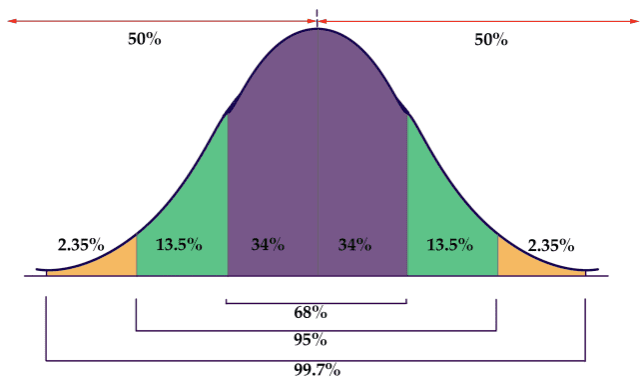The empirical rule is a way to estimate the spread of data in a normal distribution. It’s based on the idea that in a normal distribution, most of the data falls within a certain range of values around the mean.
According to the empirical rule, in a normal distribution, approximately 68% of the data falls within one standard deviation of the mean. This means that if the mean is 50 and the standard deviation is 10, then approximately 68% of the data falls between 40 and 60.
Empirical rule

To understand this better, let’s take another example. Let’s say we have a normal distribution of test scores, and the mean is 70 with a standard deviation of 5. According to the empirical rule, approximately 68% of the scores fall between 65 and 75.
This rule is useful because it helps us understand the spread of data in a normal distribution. By knowing how much of the data falls within a certain range, we can make predictions and draw conclusions about the data.